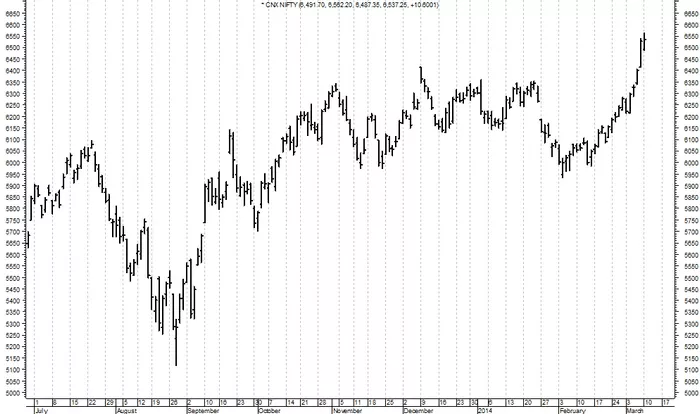Dividend stocks are shares of companies that pay regular payments to shareholders, known as dividends. These dividends provide investors with a source of income in addition to potential capital gains from selling the stock at a higher price. Understanding dividend stocks is essential for investors seeking steady income and long-term growth. This article will explore what dividend stocks are, their benefits, key considerations, and strategies for investing in them.
Definition and Basics of Dividend Stocks
What Are Dividend Stocks?
Dividend stocks are shares of companies that distribute a portion of their earnings to shareholders at regular intervals, usually quarterly. The payment, known as a dividend, is typically expressed as a fixed amount per share or as a percentage of the stock’s price, called the dividend yield.
Key Characteristics
Regular Payments: Dividend stocks provide consistent payments to investors, usually on a quarterly basis.
Income and Growth: They offer both income from dividends and potential growth through stock price appreciation.
Stable Companies: Companies that pay dividends are often well-established with stable earnings.
Benefits of Investing in Dividend Stocks
Steady Income Stream
One of the primary benefits of dividend stocks is the regular income they provide. Investors receive payments at set intervals, which can be reinvested or used for living expenses. This steady income is particularly appealing to retirees and conservative investors.
Potential for Capital Appreciation
In addition to dividends, dividend stocks can appreciate in value. Investors benefit from potential capital gains as the stock price increases over time, offering a combination of income and growth.
Reinvestment Opportunities
Dividends can be reinvested to purchase more shares of the same stock, a process known as Dividend Reinvestment Plans (DRIPs). Reinvesting dividends can accelerate the growth of an investment through compound interest.
Lower Volatility
Dividend-paying stocks tend to be less volatile than non-dividend-paying stocks. The regular income from dividends can help cushion against market fluctuations, making dividend stocks a more stable investment during downturns.
Tax Benefits
In some jurisdictions, dividends may be taxed at a lower rate than ordinary income. This can result in favorable tax treatment compared to other forms of income.
Types of Dividend Stocks
Blue-Chip Stocks
Blue-chip stocks are shares of large, well-established companies with a history of reliable performance and stable dividends. These companies are leaders in their industries and are known for their financial strength. Examples include companies like Johnson & Johnson and Microsoft.
High-Yield Dividend Stocks
High-yield dividend stocks offer higher dividend yields compared to average stocks. These stocks might appeal to income-focused investors but can sometimes be riskier. High yields can result from declining stock prices or unsustainable dividend payments.
Dividend Aristocrats
Dividend Aristocrats are companies that have consistently increased their dividend payments for at least 25 consecutive years. These stocks are known for their commitment to rewarding shareholders and can be a reliable choice for long-term investors.
REITs (Real Estate Investment Trusts)
REITs are companies that own or finance income-producing real estate. They are required by law to distribute a significant portion of their earnings as dividends. REITs can offer attractive yields and diversification into real estate.
How Dividends Are Paid
Dividend Declaration
The dividend payment process begins with the company declaring a dividend. This announcement includes the amount of the dividend, the record date, and the payment date.
Record Date and Ex-Dividend Date
To receive the dividend, investors must hold the stock on the record date. The ex-dividend date is usually set two business days before the record date. If an investor buys the stock on or after the ex-dividend date, they will not receive the upcoming dividend.
Payment Date
On the payment date, the company distributes the dividend to shareholders who were on record as of the record date. Dividends are typically paid in cash, but they can also be issued as additional shares.
See Also: What Are Cyclical Stocks?
Evaluating Dividend Stocks
Dividend Yield
The dividend yield measures the annual dividend payment as a percentage of the stock’s current price. A higher yield indicates more income relative to the stock price. However, an unusually high yield may signal underlying issues with the company.
Payout Ratio
The payout ratio is the percentage of earnings paid out as dividends. A lower payout ratio suggests that the company retains a significant portion of its earnings for growth and sustainability. A high payout ratio may indicate potential risk if earnings decline.
Dividend Growth Rate
The dividend growth rate measures how quickly a company has increased its dividends over time. Consistent and growing dividends can be a sign of a company’s strong financial health and commitment to shareholders.
Company’s Financial Health
Assessing a company’s financial health is crucial when evaluating dividend stocks. Look at factors such as revenue growth, profitability, debt levels, and cash flow to ensure the company can sustain its dividend payments.
Risks of Dividend Stocks
Dividend Cuts
One risk of investing in dividend stocks is the possibility of dividend cuts or suspensions. If a company faces financial difficulties, it may reduce or eliminate its dividend payments, impacting income and stock value.
Interest Rate Risks
Dividend stocks can be sensitive to changes in interest rates. Rising interest rates can make dividend stocks less attractive compared to fixed-income investments, potentially leading to lower stock prices.
Market Risk
Like all stocks, dividend stocks are subject to market risk. Stock prices can fluctuate due to economic conditions, company performance, and market sentiment, which can affect the total return on investment.
Inflation Risk
Inflation can erode the purchasing power of dividend payments. If dividends do not grow at a rate that outpaces inflation, the real value of the income received may decline over time.
Strategies for Investing in Dividend Stocks
Diversification
Diversifying investments across different sectors and industries can help reduce risk. Investing in a mix of dividend-paying stocks, including blue-chip stocks, high-yield stocks, and REITs, can provide a balanced income stream.
Focus on Quality
Investing in high-quality companies with a track record of stable and growing dividends can offer more reliable returns. Look for companies with strong financials, a history of dividend growth, and a reasonable payout ratio.
Consider Dividend Reinvestment Plans (DRIPs)
Participating in DRIPs allows investors to reinvest dividends into additional shares of the stock, often at a discount. This can accelerate growth and compound returns over time.
Monitor and Adjust
Regularly review and adjust your dividend stock portfolio based on changes in company performance, dividend policies, and market conditions. Staying informed about your investments can help optimize returns and manage risks.
Conclusion
Dividend stocks offer a blend of regular income and potential for capital appreciation, making them an attractive option for many investors. Understanding the fundamentals of dividend stocks, evaluating their benefits and risks, and employing effective investment strategies can help you make informed decisions and achieve your financial goals. By focusing on high-quality companies and managing your portfolio wisely, you can build a reliable income stream and enhance your long-term investment returns.
[inline_related_posts title=”You Might Be Interested In” title_align=”left” style=”list” number=”3″ align=”none” ids=”3492,3580,3583″ by=”categories” orderby=”rand” order=”DESC” hide_thumb=”no” thumb_right=”no” views=”no” date=”yes” grid_columns=”2″ post_type=”” tax=””]




























